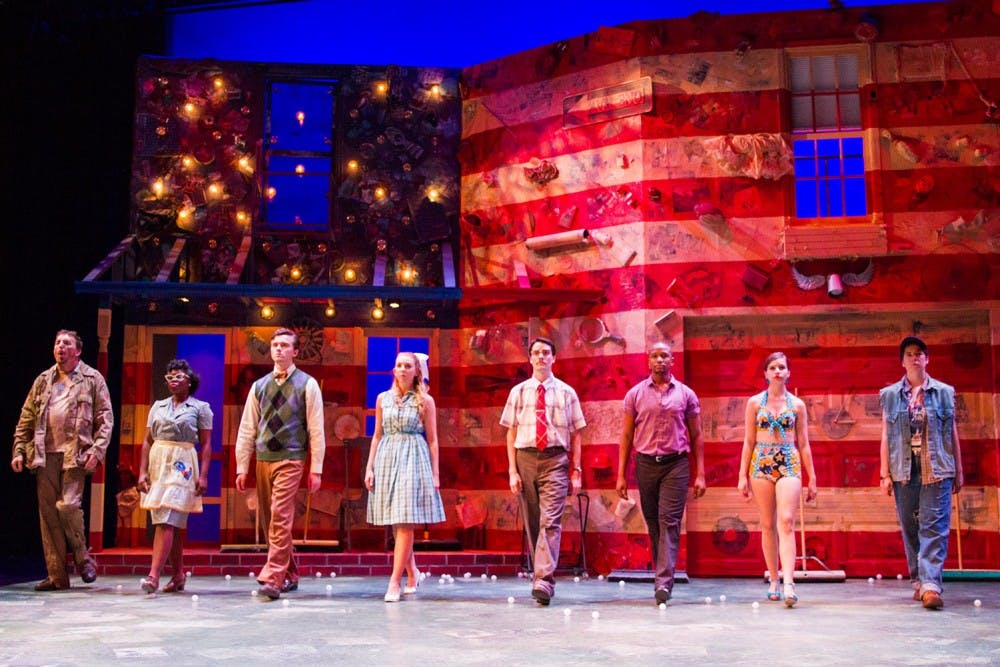Based on the works of American artist Robert Rauschenberg, bobrauschenbergamerica discusses the idea of exploring freedom through art, understanding what a community means and ennobling the ordinary.
In most plays, one can expect the typical sequence of events. It opens with exposition, an inciting incident causes the conflict and then the rest of the story is about solving the conflict. bobrauschenbergamerica is not that kind of play.
“If you try to watch the play and put it in a box, you’re going to drive yourself crazy,” said Thomas Daniels, a third-year graduate actor. “If your mind is constantly working, it’s a success.”
As the first Division of Theater mainstage production, bobrauschenbergamerica is a play by Charles Mee written in a collage-like style to reflect the work of 20th century American artist Robert Rauschenberg. It runs for two weeks, Wednesday through Saturday, in the Forum Theater in the Radio-Television Building.
Rauschenberg is famous for his “combines” of paintings and sculptures. He invented the term to break out of the rigidity of the notion that art is limited to one medium per piece.
The play captures the essence of a collage as it tells an overall narrative even if specific storylines do not flow from one scene directly to the next.
“The combines are pieces of different random things juxtaposed to another,” said Marianne Murray, a junior studying theater performance who plays Susan. “When you look at the whole picture, you’re not seeing all the different pieces, you see one piece of art.”
Daniels, who plays Allen, said the idea the cast worked with from the beginning was the play is a block party and all the scenes are a result from that.
Daniel Dennis, the director of the play, said he has wanted to do bobrauschenbergamerica for a few years after he researched the SITI Company, an ensemble-based theater company in New York City who took part in creating the play with Mee, for his dissertation.
From asking what makes a community to questioning how art can let us explore what it means to be free, the themes discussed in the play, Dennis said, are what drew him to it.
Dennis said one of the greatest aspects of Rauschenberg’s work is that it allowed art to be ordinary, but Dennis said he did so in such a way that ennobles the ordinary and makes it no longer “simply ordinary.”
One of Rauschenberg’s most famous works “Monogram,” which is a tire encircling a taxidermy goat, represents that ennoblement. “Monogram” can be seen in the production.
“He saw beauty in that goat,” Murray said. “That is the play. The underlying connection of it all is us taking it and saying what beauty I can find in it.”
@buzzlightmeryl
mg986611@ohio.edu






